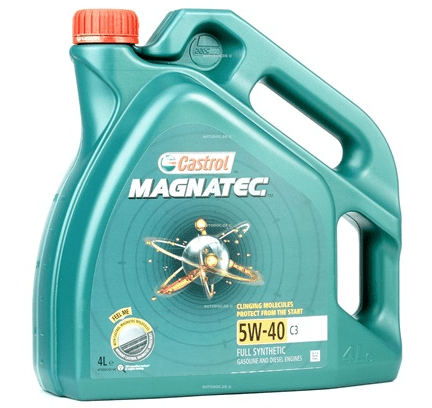
Lubrication system performance directly affects engine life. This explains why many motorists are wondering what is the best oil viscosity to ensure reliable engine protection in the winter. In this article we explain the properties of the two most popular types of oil: 5w30 and 5w40. After reading this article you will know exactly which type is best for winter.
Contents
What does the designation mean?
Oils intended for winter use must have good fluidity. They must be thin enough to lubricate the engine even in cold temperatures. The number before the letter W indicates the temperature at which the oil pump can operate properly and the crankshaft can operate with sufficient torque to start the engine. The letter W means that the oil can be used in winter. The number after the W indicates the properties at high temperatures, which are defined by the upper and lower thresholds for the kinematic viscosity at 100 °C and the dynamic viscosity at 150 °C and the shear rate at 106 s−1.
In order to produce universal oils with a wide temperature range, manufacturers use various oil additives. Although the additives used reduce the influence of temperature on viscosity, they can adversely affect other properties of the lubricant.
Properties of 5w30 and 5w40 type oils
Both lubricants have the same properties at low temperatures. Both have the optimal viscosity for starting the engine at -30 °C and fluidity at -35 °C. However, they differ in their properties at high temperatures. The kinematic viscosity of the 5w30 type is between 9.3 and 12.5 mm2/s; the dynamic viscosity is 2.9 mPas. In the case of 5w40 oil, these values are respectively: 12.5-16.3 mm2/s and 3.5 mPas.
Both types have advantages and disadvantages. For example, the 5w40 creates a thicker and more powerful oil film that seals gaps excellently and is designed for higher loads and for these reasons is often used to lubricate the engine of powerful high-performance sports cars. On the other hand, due to the high starting resistance, it can affect the motor dynamics. The larger the operating temperature range, the shorter the service life.

The 5w30 motor oil is also better pumped through the lubrication system. It also ensures better cleaning of the fuel system components, which contributes to its cooling and reduces fuel consumption. On the other hand, using this oil can increase the likelihood of leaks as the number of unlubricated gaps in mechanical components increases.

3 important tips for an optimal selection
- If you use your vehicle in the city, are often stuck in traffic, often drive at high speed and your vehicle is older, then you should use the 5w40 oil. If you prefer a calm driving style, want to save fuel and protect the environment is important to you, it is better to use a 5w30 oil.
- In addition to the viscosity, there are a few parameters to consider when choosing the The following must be taken into account when selecting the lubricant:
- Composition of the base oil. Some engines can only use synthetic oils, others only mineral oils.
- API and ACEA classification. Even oils with the same SAE viscosity grade can differ in the amount of additives, ash content and other parameters. These classification systems take all these differences into account.
- Also remember that the 5w30 oil can only be replaced with 5w40 oil and vice versa if the vehicle manufacturer allows it. Otherwise engine damage can occur prematurely.
Why the approval of engine oil by a car manufacturer is so important
In fact, the viscosity of the oil is a relative parameter. As the temperature changes during engine operation, its viscosity and the thickness of the oil film may increase or decrease. When designing an engine, designers accurately calculate the dynamics with which engine oil properties change and select the best product according to the requirements of different engine operating modes.
For example, when an engine is started, the thickness of the oil film is much higher than when the engine reaches operating temperature. This increases the friction between the parts in contact. This favors faster heating of the engine. As the temperature rises, the viscosity of the oil decreases, which also reduces the frictional force and the load on the engine.
If the viscosity of the oil exceeds the value specified by the manufacturer, the engine will be subjected to excessive loads during the starting phase. It is especially dangerous with a sharp increase in engine speed, that is, when the shear rate increases abruptly, while the viscosity does not correspond to the operating temperature. In this case there is a risk of overheating of the engine. In addition, constant operation under excessive loads also affects its service life. Constant overheating also promotes faster oxidation of the lubricant.

On the other hand, reduced viscosity is no less dangerous. Mechanical parts wear out much faster if the oil film resistance is insufficient. In addition, when the engine operates at high engine speeds, the lack of oil can lead to engine failure and the lubricant burns faster.
Conclusion
Always choose lubricants according to the technical recommendations of the vehicle manufacturer. If oils with different viscosity values can be used, choose the oil that best suits the operating conditions of the vehicle, as well as the conditions of its components and units. Also, remember that just considering the viscosity index is not enough: the composition of the base oils and their API and ACEA classes are also important. So if you choose the oil carefully and buy it from CarTipsandmore, your car's engine will be reliably protected all winter long.
